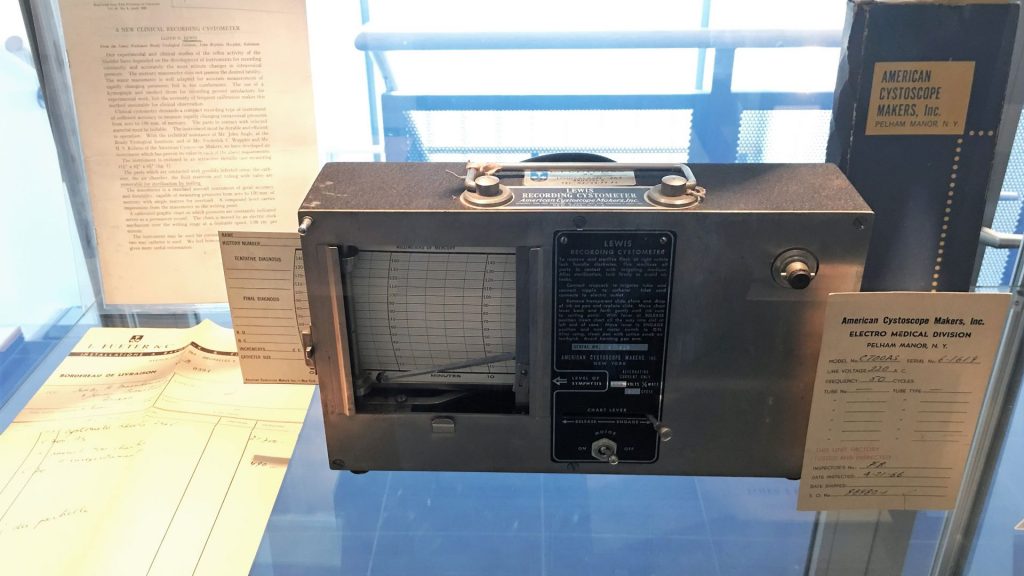
Dr. Johan Mattelaer | 3 October 2018
The EAU’s Historical Collection is a very important collection of historical and urological items such as cystoscopes, lithotripters, books etc. Many of these are displayed in the online European Museum of Urology.
The EAU Central Office in Arnhem, the Netherlands, also houses six showcases containing historical instruments and books. One of these showcases contains a Lewis cystometer and this is my favourite instrument. I have chosen this instrument for special notice several reasons.
Firstly, it is one of the first commercially available instruments used in clinical urodynamics. The apparatus was first described by LG Lewis (“A new recording cystometer”) in the Journal of Urology 41, p.638 in April 1939 and entered clinical practice after World War II. This original article by LG Lewis is displayed next to the instrument in Arnhem.
The instrument was made by American Cystoscope Makers Inc. (ACMI) New York. The Lewis cystometer was popularised due to the important work on neurogenic bladder by Donald Munro (1898-1978) from Boston City Hospital, showing tidal drainage to prevent recurrent urinary tract infection and the treatment of neurogenic bladder by intermittent catheterisation at Stoke-Mandeville Hospital by Sir Ludwig Gutmann (1899-1980).
Secondly, it was a very simple and inexpensive instrument and easy to use. It is much less complicated than the other instruments for urodynamics, but you could trust on the basic results indicating atonic or hypertonic bladder or autonomic contractions.
I have a personal relation with the Lewis cystometer that is displayed at the EAU Office in Arnhem. When I was a resident in general surgery in 1966, there was no urological department at that hospital. My chief, Dr. Robert Maenhoudt was aware that he was not specialised in urology and pushed me as a resident to introduce ‘modern urology’ at his department. One of the first instruments he bought was a Lewis cystometer. The original bill from 1966 and the original reading cards in their original box are all on display in Arnhem!